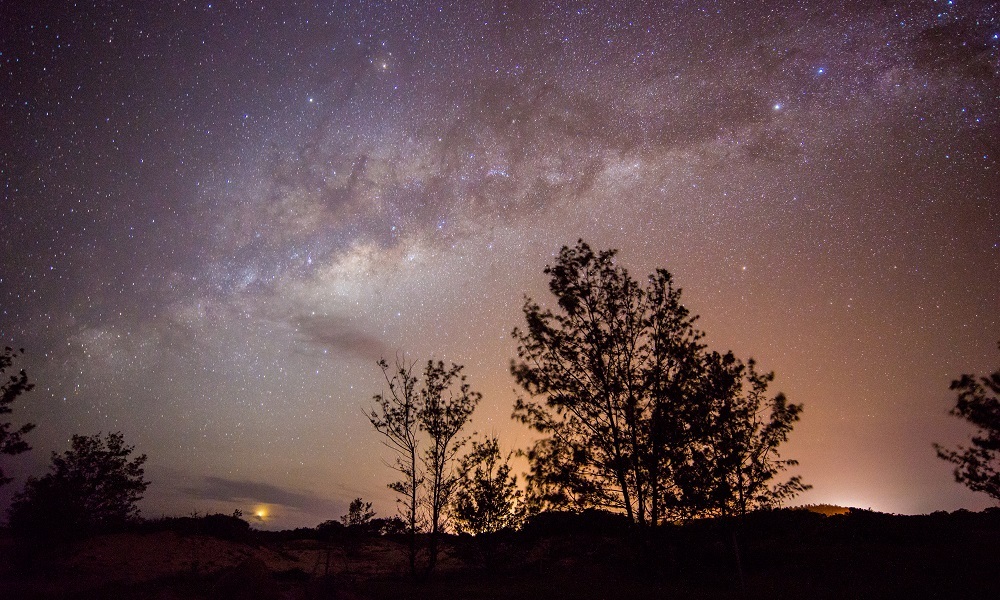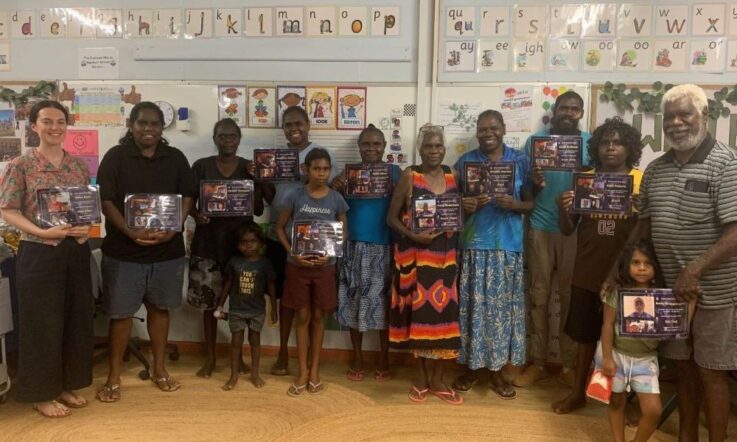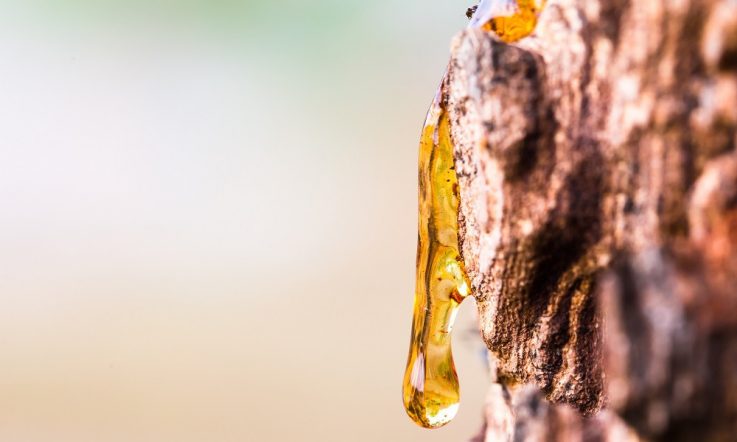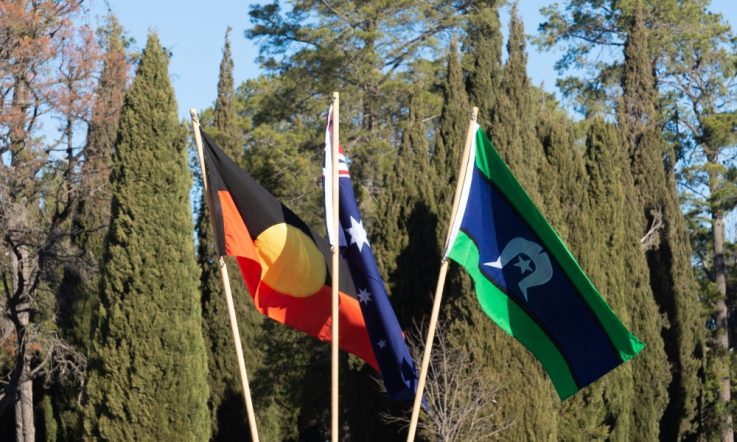Emerging Sciences Victoria (ESV) have recently launched an online Indigenous Science course in collaboration with John Monash Science School to give secondary school students in Victoria an opportunity to learn about the knowledge systems of local Indigenous cultures about the land, water, and sky.
The course is now in its second semester and is co-taught by Jodie Smith, a Humanities teacher at John Monash Science School, and Krystal DeNapoli, the co-creator of the ESV course. In this Q&A, Jodie and Krystal share how the course was developed, the benefits of being online, and the learning outcomes for students.
Why was this course developed? What do you hope students take away from it after they’ve completed it?
Krystal: I have worked as a teacher in the ESV program for a few years. As an Aboriginal astrophysics graduate, I would often speak about Aboriginal Astronomy while teaching in the ESV Astrophysics program. After working with Monash University to create our first Indigenous Science course for a cohort of second-year undergraduate students, we became inspired to create an Indigenous Science course for ESV at John Monash Science School. It was developed in order to cater to student interest in Aboriginal and Torres Strait Islander sciences which have traditionally been excluded from the curriculum.
My colleague Jade Bohni and myself had to create the course from scratch as there aren’t many pre-existing lesson plans centred on Indigenous Science. We wanted to explore concepts of Aboriginal and Torres Strait Islander land, water, and sky knowledge in a way that respected Indigenous ways of knowing. The main considerations were to structure the course such that the students commenced with two weeks of cultural competency and Aboriginal history, followed by a few weeks dedicated to each broader theme of knowledge.
We collaborated with Yorta Yorta man Josef Tye from the William Cooper Institute at Monash University who led the students across the two introductory weeks and had a few guest speakers to speak to the students about their expertise in relevant fields.
By completing this course, I want students to understand the rich, world-first history of Science that has been developed by Aboriginal and Torres Strait Islander peoples for tens of thousands of years on this continent. There is a persistent misunderstanding of Indigenous culture held by Australian people which has arisen from a lack of education on who we are and why our sovereignty and culture is central to us.
Jodie: For me personally, through this course I want students to look beyond some of the colonial dominant narratives and see Indigenous practices and narratives from tens of thousands of years ago as expertise.
Can you tell us about what is covered in this course?
Jodie: The course begins with two cultural competency lessons led by Josef Tye. The remainder of the course is divided into sky, sea and land.
The sky section focuses on Indigenous astronomy which is Krystal’s area of expertise. The land looks at different ecosystems and climates, Indigenous seasons and volcanos. And finally, the sea focuses on the Budj Bim eel traps. There is more that we would like to cover but there is not enough time.
Krystal: We also explore traditional fire management techniques on how to care for Country using fire. We try to sequence the topics such that although they tend to flow in a semi-compartmentalised way from looking to the skies, to the land, and then the water, we are always tying back in relevant knowledge from earlier topics to build up their overall understanding of how all areas of knowledge tie into one another.
Ultimately, one of our most important goals is to communicate to students that Aboriginal and Torres Strait Islander knowledge systems are fundamentally interconnected; that they are structured in such a way that compartmentalising knowledge into separate topics inevitably overlooks important elements of the knowledge system.
An example of what we mean by interconnected systems is how a constellation in the sky can inform us of seasonal changes in our environment, like when plants are flowering or ready for harvest; when animals are breeding or suitable for hunting; when relevant aquacultural systems will be brimming with eels for harvest; or if it is the right time of the month to be fishing particular prey. The skies inform us of processes on the land and in the waters, and vice versa.
Many people think of Science as a practical, hands-on subject. How do you achieve this element in an online course?
Jodie: At its heart, the course challenges students' understanding of Science as they may learn it at school. Some of the Indigenous knowledge is shared through centuries old stories that are passed down.
The course is also very visual, using landscapes and star formations to encourage students to demonstrate Indigenous knowledge of the sky and land. Students are also given opportunities to explore the sky, sea and land in their own part of Victoria through short homework tasks such as to look at the night sky to find a specific constellation.
Krystal: As Jodie has stated, our first topic is astronomy, or sky knowledge, which is communicated largely through observations and descriptions within oral traditions (Dreaming stories), so we hope that students are able to see past what they may usually expect Science to look like (a practical, hands-on subject).
Indigenous Science is communicated through oral traditions which encode scientific topics into Dreaming stories (like that of the Rainbow serpent) so that they are able to be conveyed in either very complex or simplified forms that can be suitable for a range of age groups and levels of expertise.
That being said, we do have a few hands-on ways we try to engage the students in class activities that can be explored in the online environment. In the astronomy portion, we teach a navigation workshop which allows the students to go outside and use Indigenous celestial navigation techniques to determine their latitude. We set short research tasks which get the students to engage with class content in creative ways; collaborating via Google Slides to construct a visual tour of the ecosystems found in the students’ hometowns/suburbs, constructing science posters which explore Aboriginal aquaculture systems or local Aboriginal seasonal calendars.
We are also grateful to have access to many stunning, free virtual tours of natural landmarks that have been created by several organisations across Victoria. This means that in lieu of a class field trip, we can construct lessons so that the students are able to be immersed in those environments from their computers.
What are the advantages of running this as an online course?
Jodie: This year we had students from the Yarra Valley, Mornington Peninsula and the Mallee. The students are able to learn from each other about the Country their peers are in and bring knowledge of the landscape, ecosystem, climate and local practices. The student from the Yarra Valley shared that they had seen the eel traps used in the Dandenongs in a local exhibition, while those on the Peninsula were more focused on the ocean.
Krystal: The key advantage of running this as an online course is that the students’ locations are no longer a barrier for accessing education. We are able to have students from all schools across Victoria enrol into the ESV courses. Often schools in rural areas may miss out on the chance to explore niche science topics. An online classroom removes that barrier.
Think about a future topic or unit of work you’re teaching: How could you integrate the histories and cultures of Indigenous people into this learning area? How could you work with members of the community to embed Indigenous perspectives into your school curriculum?
To find out more about the ESV Indigenous Science course, visit their website.



